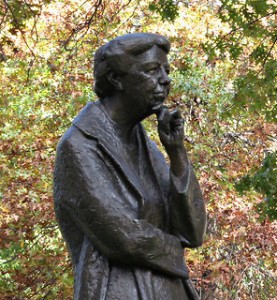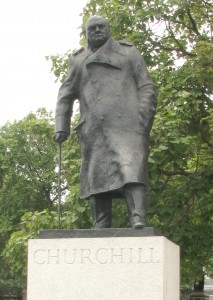The final review of Frank Gehry’s design for the Eisenhower Memorial in Washington, D.C., has been postponed yet again and the project seems more and more likely to be shelved. In a recent letter to Sen. Daniel Inouye, John S. D. Eisenhower, the President’s son, raises an issue that has nothing to do with the quality of Gehry’s design (which I have supported), nor with the over-wrought classical-modernist debate. Why couldn’t the memorial simply be “a green open space with a statue in the middle” he asks? Good question. Ever since the FDR Memorial spread over more than seven acres, memorial sponsors have felt the need to appropriate large sites, and then fill them up with water basins, fountains, figures, walls, and reams of quotations. The lackluster Korean War Memorial occupies over two acres, the Vietnam Veterans Memorial uses three acres, Martin Luther King Jr.’s overblown memorial sits on four acres, and the memorial to World War II consumes no less than seven. John Eisenhower’s suggestion of turning the four acres of the proposed Eisenhower memorial into a green square with a single statue of the President would reverse this trend. The challenge would be to find a modern sculptor who is up to the task of creating not merely a depiction of the president-general, but a work that captures his somewhat elusive mixture of modesty, shrewdness, and grit. The moving statue of Eleanor Roosevelt by Penelope Jencks in Riverside Park is one model. The memorial to Winston Churchill in Parliament Square in Westminster is another. Ivor Roberts-Jones’s bronze is twelve-feet tall and stands on a plain granite block inscribed with one word—CHURCHILL. The Eisenhower memorial could say simply IKE.
On Culture and Architecture



Mr. Rybczynski,
What do you think of the proposal to locate such a statue somewhere at or near the World War II Memorial? Maybe at the “contemplative area” to the north that remains mostly unknown and unused?
JSF
I am still hoping for a resolution of the Gehry design, but if that falls through, your suggestion of a statue in proximity to the World War II Memorial is compelling. It might help to turn the tide to a more modest scale of commemoration.